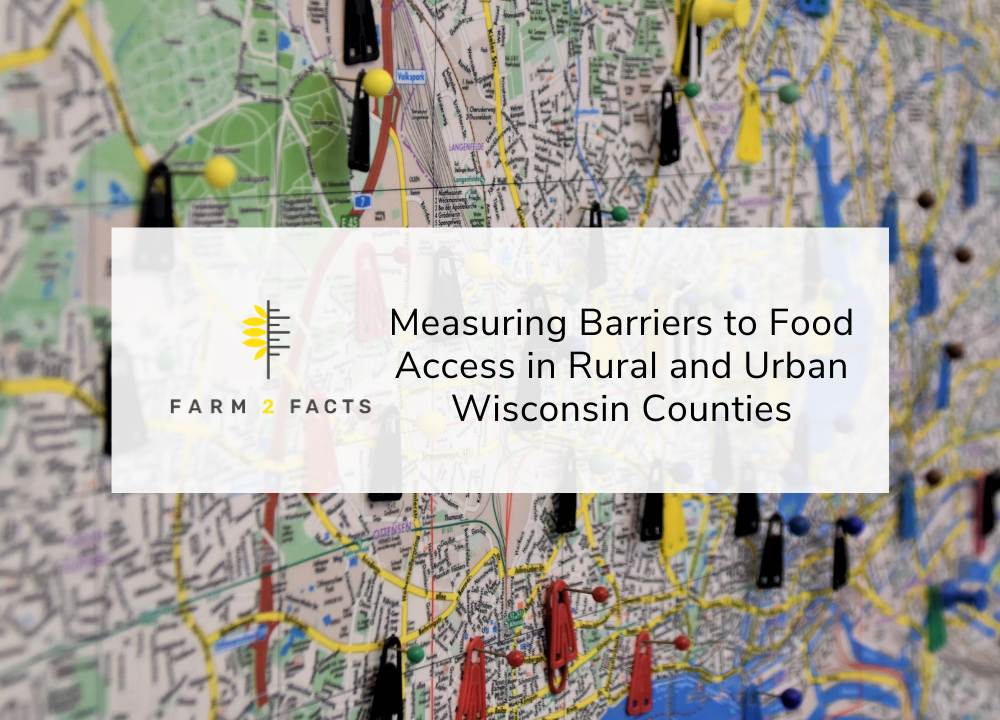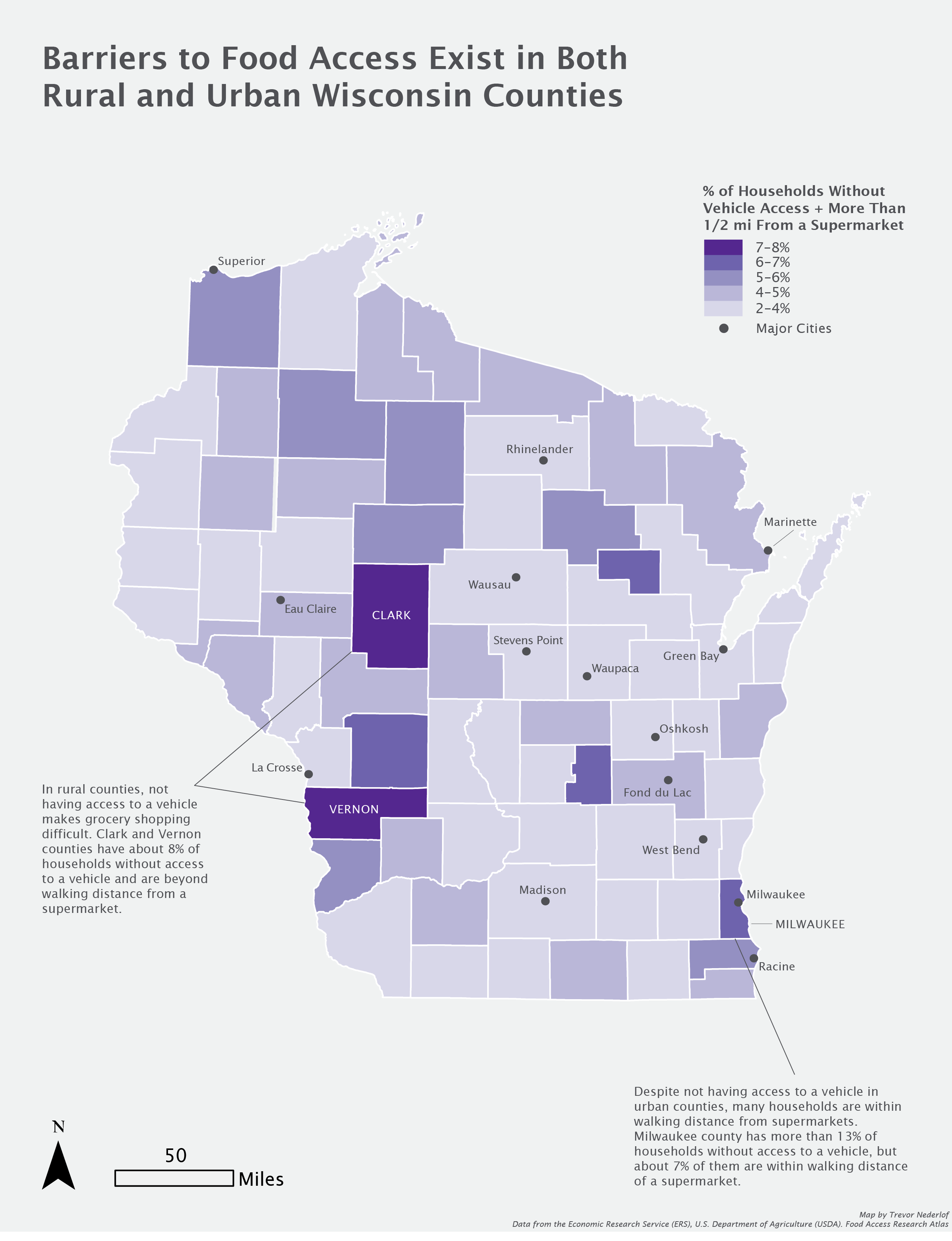
Food insecurity, otherwise known as a lack of reliable access to food, contributes to many long-term health issues and has severe implications for child development. Food insecurity is a very significant issue in the United States. A 2020 Feeding America report projected that in the United States, 1 in 8 adults and 1 in 6 children during 2020 experienced food insecurity.
Access to healthy food is essential for households across Wisconsin in both rural and urban counties. Wisconsin counties vary widely in terms of demographics and geography. Due to these differences, researching barriers to food access requires examining several different factors.
Food access can be measured in various ways, but most studies examine a combination of transportation access and the proximity of households to sources of food. For example, transportation access includes a household’s ability to access a vehicle, This is a valuable measure to determine if that household can travel distances beyond walking or cycling, or via public transportation stops. For the measurement of proximity to food sources, various food sources including supermarkets, discount stores, convenience stores, farmers markets, and food pantries are counted. Out of all of these sources, most healthy food is acquired from supermarkets and farmers markets, with supermarkets being the most widespread. In more rural counties, vehicle access tends to be the main barrier to food access due to driving being the primary means of transportation, and supermarkets are often too far for most to walk. In more urban counties, the barriers are a bit more complex as lack of vehicle access must be examined alongside each household’s geography. If a household is located close to a supermarket, vehicle access isn’t as much of a barrier.
To measure food insecurity, the Farm 2 Facts team examined the percentage of households that do not have access to a vehicle and are further than half of a mile from a supermarket, making it difficult to walk. These percentages are shown per county on the map below, highlighting both rural and urban counties which have high food insecurity rates. The two counties experiencing the highest rates of food insecurity on the map, Vernon and Clark, each have around 8% of their population without access to a vehicle, making access to healthy food challenging in such rural counties. On the other hand, the urban county of Milwaukee has the highest percent of the population without access to a vehicle at around 13%. However, 7% of these households live quite close to a supermarket (within half of a mile).
Ensuring households have access to fresh and healthy foods is critical for both child and adult development. In addition to supermarkets, farmers markets can help expand food access, especially in areas where people are food insecure. Markets are needed in both urban and rural locations, and must be physically accessible, as that is the most significant barrier to food access.
At Farm 2 Facts, researchers are using spatial analysis to investigate the transportation networks and the demographics of communities in relation to market access to find ways to expand people’s access to food in Wisconsin and beyond.

